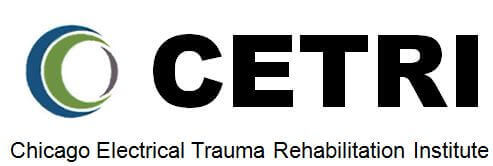Avoiding Domestic Electrical Injuries

Electricity is a fundamental part of our daily lives, powering our gadgets, appliances, and lighting our homes. However, the convenience of electricity comes with potential risks, particularly the danger of electrical injuries at home. While we often associate electrical hazards with high-voltage industrial settings, domestic electrical incidents can also have severe consequences.
The Risk at Home
In a typical household, the voltage of electricity is well below 600 volts—which is categorized as low-voltage based on electrical power design criteria. Yet, even well below this level, electrical shocks can occur and result in damaging or fatal injuries. These injuries are common and can happen due to various reasons, such as contact with exposed appliance parts or wiring, faulty electrical equipment such as extension cords, or as a result of children inserting an energized electrical power cord into their mouths.
The “No-Let-Go” Phenomenon
One particularly dangerous aspect of low-voltage shocks is the “no-let-go” phenomenon. This occurs when an individual touching a live electrical source experiences muscle spasms due to the involuntary contraction of muscles, which prevents them from releasing their grip. This prolonged contact can lead to more extensive injury or even death.
Long-Term Effects
Electrical injuries can result in more than just a burn. Long-term effects may include neurological symptoms such as pain, headaches, fatigue, and problems with sensation and coordination. Neurocognitive functions like attention, memory, and speed of mental processing can also be affected. Moreover, the psychological impact of an electrical shock can be profound, with some survivors experiencing post-traumatic psychiatric disorders that disrupt their quality of life.
Prevention is Key
To prevent electrical injuries at home, it is essential to:
- Inspect Your Wiring: Regularly check the condition of your home’s electrical system and have any worn or exposed wiring repaired by a qualified electrician.
- Childproof Your Home: Use safety covers on all electrical outlets, keep cords out of reach, and educate children about the dangers of electricity.
- Use Appliances Wisely: Follow manufacturer instructions for all household appliances and do not unplug them from an appliance while leaving them plugged into the wall socket.
- Be Aware of Wet Conditions: Keep electrical devices away from water as they conduct electricity, increasing the risk of shock.
- Use Caution with DIY Electrical Work: Consider hiring a professional electrician for home electrical wiring installations or repairs.
Conclusion
While electricity is indispensable, it is imperative to respect its potential for harm. By understanding the risks and taking proactive steps to mitigate them, we can enjoy the benefits of electricity without compromising our safety and well-being. Remember, prevention is always better than cure when it comes to electrical safety at home.
If you or your client/patient has been victim to electrical injury, reach out to the Chicago Electrical Trauma Research Institute (CETRI), which offers resources and guidance on the multidisciplinary care for electric injuries. Additionally, for general safety tips around the home, the National Safety Council provides a wealth of information on preventing common accidents and injuries.
